I’ve recently been experimenting with using lichen as a dye for wool. Some lichens, the umbilicates, roccella and others can produce gorgeous reds, purples and blues, but I have yet to find them. I have been experimenting with the more common types. I’m testing ways to process the dye and to see what develops.

Dyeing Wool with Lichens
by Ragtimelil
Lichens are plentiful around here so I tried dyeing wool with some common varieties.
Lichens
Lichens are not plants, but a composite organism generally consisting of algae and fungi. They are not parasitic as many believe, and do not harm the trees they attach themselves to. They are extremely sensitive to air quality and can be scarce where the air is unhealthy. Some are rare so I follow the rule of not taking more than 10% of any plant in any one area leaving 90% behind. That hasn’t been a problem with these lichens since they are plentiful.
I haven’t been able to identify them with any certainly but to the best of my knowledge, I have a variety of foliose lichen on the left with foliage type lobes. I also have more than one of fruiticose lichen on the right that looks more shrub-like. This first batch was from lichen gathered in New Hampshire. I will do another batch with lichen from Texas later on and see if there is a difference.
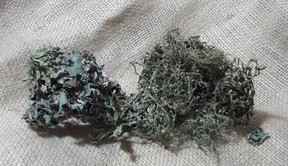
Identify Lichens
 | Lichens (Smithsonian's Natural World Series) From the rain forests of Costa Rica to the frozen deserts of Antarctica, lichens are a familiar part of the landscape. Widespread and long-lived, yet vulnerable to environmental... Only $7.99 |
 | Lichens of North America Lichens are a unique form of plant life, the product of a symbiotic association between an alga and a fungus. The beauty and importance of lichens have long been overlooked, des... |
Making the Dye Bath and Dyeing the Wool
I gathered the lichen from branches bearing lichens on the ground usually after a high wind. I dried them and saved them in a bag until I had enough. I crushed them up, covered with water and about 50% water and 50% ammonia. Then I let it sit, and sit.
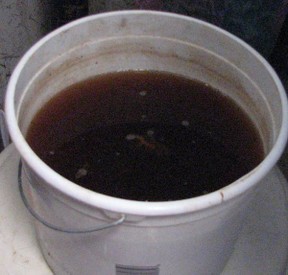
According to the book, the brew should sit and ferment for four weeks or more being stirred twice daily. The dye bath turned a rich brown color. Finally I strained out the lichens, put the liquid in my stainless steel dye pot, added clean, wet wool and simmered for about an hour.
Dyeing the Wool
My first look was not impressive. It was the same tan I could get from other plants or tea. I let it sit for a couple of days and added a bit of ammonia. Finally I simmered it again with some vinegar added. This seemed to help the wool soak up the dye resulting in a pretty reddish brown color. It was a lot of time and work for a color I could get more easily with other plants. It is a pretty brown through.
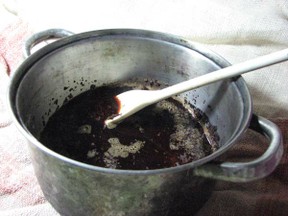
This is the book I have and I love it. Tons of things to use for dyes.
 |
| Craft of the Dyer: Colour from Plants and Lichens |
The Next Batch
I’ll try another batch with lichen gathered in Texas. It’s very possible that I will have gathered different types of lichen and may get a different color. I won’t know until I try it. I can also reuse the first dye bath since there is plenty of dye left in it. I can try putting it in a non-neutral pot such as aluminum and see what that element will do to change the color, if anything.
I'm posting results on my blog, Cheap Twills, if you'd like to stop by and see what's happening.
You might also like
Beginning with Natural Dyes - How to Dye with TeaNatural dyes give a soft, muted light to your wools and fibers. Learn some ba...
How to Spin Yarn Without a Spinning WheelAlways thought you'd like to learn how to spin, but didn't want to spend the ...
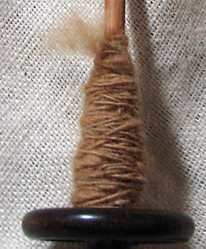

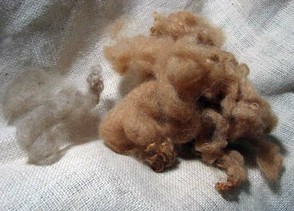
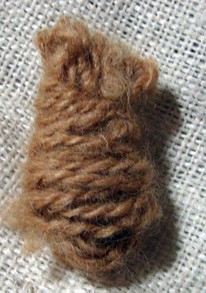


 How I Found My Free Family History Programon 09/05/2013
How I Found My Free Family History Programon 09/05/2013
 Finding a Graveon 09/01/2013
Finding a Graveon 09/01/2013
 Do Border Collies Make Good Pets?on 08/11/2013
Do Border Collies Make Good Pets?on 08/11/2013
 Hubert Patey - an Indentured Servanton 08/02/2013
Hubert Patey - an Indentured Servanton 08/02/2013

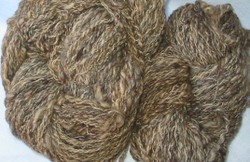
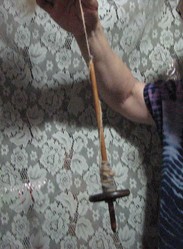
I'm Dyeing to Read Your Comments
Could be. Synthetics have their place. We'd be wiping out all the plants if we tried to use them for dyes for commercial clothing today. But nothing beats finding a new plant and the soft colors you get from natural dyeing.
I believe lichens are one of the ancient sources of pigments... It is good to know about natural sources, although many synthetic colors became very popular. Wish you good luck with your experiments:)